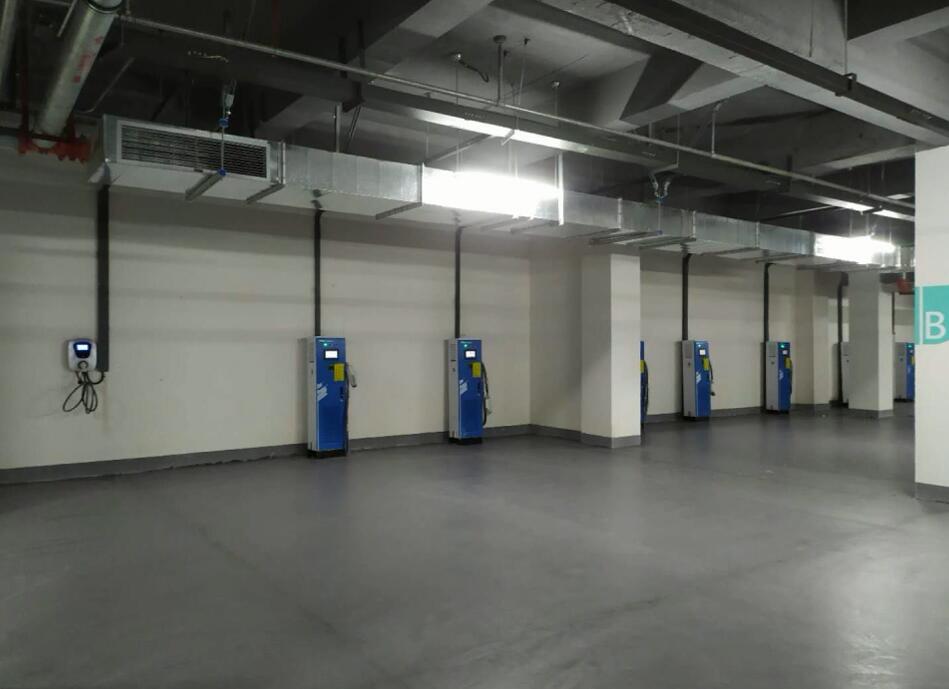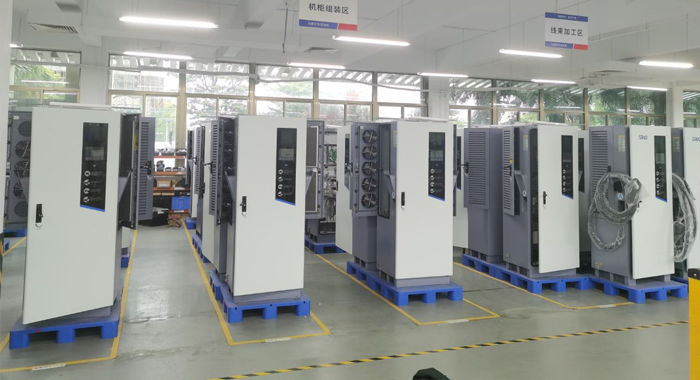
Products
Fast, Reliable, Everywhere

Solutions
Efficient, Innovative EV Charging Solutions.
News
We are committed to the innovation and application of EV charging.
As global emphasis on environmental protection and sustainability grows, the market share of electric vehicles (EVs) is rapidly expanding. However, potential EV buyers often worry about charging issues. This article addresses these concerns, providing current and prospective EV owners with insights into the current state and future prospects of charging technology. By understanding the reliability and advancements in EV charging,will users be able to maintain and increase their confidence in portable charger electric vehicle?
According to the International Energy Agency (IEA), global EV sales have seen a significant upward trend in recent years. In 2022, global EV sales reached about 10 million units, a 50% increase from the 6.6 million units sold in 2021. This rapid growth indicates increasing consumer recognition of EV advantages. The report predicts that global EV sales will continue to rise significantly by 2030.
As EV technology evolves, so does charger technology. Current advancements have significantly improved charging speed, connector compatibility, and software stability. The widespread adoption of fast-charging technology has notably reduced charging times, and improved charging interfaces have resolved compatibility issues between different EV brands. Additionally, optimized charger software systems have decreased the incidence of faults during charging.

Despite the growing number of EV charging stations, their distribution remains uneven. According to the U.S. Department of Energy, the U.S. currently has nearly 43,000 public EV charging stations and about 120,000 charging ports, mostly Level 2 chargers. The distribution is highly uneven, with California having nearly as many charging stations as the 39 states with the fewest stations combined. The European Alternative Fuels Observatory reports that the EU has nearly 275,000 EV charging stations, equating to about 62 stations per 100,000 residents. In comparison, the U.S. has about 37 stations per 100,000 residents. In some remote areas, low coverage rates mean drivers must spend extra time and effort finding a charging station. Although modern EVs have significantly increased driving ranges, frequent charging remains a consideration for daily commuters with long distances or those needing long-distance travel.
Traditional slow charging technology requires longer times to fully charge the battery, limiting EV convenience. Slow charging typically occurs at home or standard public charging stations with power levels between 3 kW and 22 kW, taking several hours to fully charge an EV. The lower efficiency of these stations can lead to long waiting times.
Here is a comparison of charging efficiency between slow and fast charging technologies:
| Technology Type | Charging Time (Hours) | Charging Efficiency (%) | Typical Use Scenario |
| Slow Charging (AC Level 1) | 8-12 hours | 90-95% | Home Charging |
| Slow Charging (AC Level 2) | 4-6 hours | 90-95% | Public Places, Home Charging |
| Fast Charging (DC Level 3) | 0.5-1 hour | 85-90% | Highway Service Areas |
Advantages of Slow Charging
Disadvantages of Slow Charging
For those preferring the flexibility of fast charging, slow charging can be inconvenient.
Major companies are investing heavily in new battery technologies, such as solid-state batteries, sodium-ion batteries, iron-air batteries, and silicon anode materials. These technologies promise significant improvements in energy density and charging speed, extending driving ranges and reducing charging times.
| Battery Type | Energy Density (Wh/kg) | Charging Speed | Analysis | Data Source |
| Solid-State Battery | 300-500 | Fast (20-30 min) | Uses solid electrolytes, eliminating thermal runaway risk, enhancing safety and energy density | Source 1 |
| Sodium-Ion Battery | 100-150 | Medium (1-2 hrs) | Uses abundant sodium resources, offering lower costs and good cycling stability | Source 2 |
| Iron-Air Battery | 500-700 | Slow (4-6 hrs) | Utilizes iron-air chemical reactions, offering ultra-high energy density for long-term storage | Source 3 |
| Silicon Anode Material | 400-600 (with lithium-ion) | Fast (30 min-1 hr) | Significantly improves lithium-ion battery density and speed but faces issues with volume expansion and cycle life | Source 4 |
General maintenance of charging infrastructure includes safe storage of charging cables, regular inspections, and cleaning of equipment. Chargers may also require occasional repairs and troubleshooting. Warranty prices vary by manufacturer, but repairing chargers outside warranty can be costly. Despite the high costs of purchasing, repairing, and maintaining EV charging stations, investing in charging station services is worthwhile in the long run. As charging stations become more widespread, the cost of using EVs will significantly decrease, providing more economic benefits to car owners.
Users need to understand the optimal conditions for using EVs, including temperature, vehicle weight, and reasonable charging and discharging times.
Extreme temperatures can cause issues for EV batteries. Both very hot and very cold temperatures affect battery chemistry, potentially reducing driving range by 20% to 40%. In regions like India, with hot climates (winter temperatures at 25°C and summer temperatures reaching 45°C), high temperatures can impair battery performance, reduce efficiency, and shorten driving range per charge. Although the battery accounts for less than a quarter of the vehicle's weight, it plays a crucial role.
The heavy weight of EVs can reduce driving range. Here are some references from articles, demonstrations, and reports discussing the impact of EV weight on driving range:
| Vehicle | Cargo Description | Range Impact | Source |
| Rivian R1T | Towing: "Heavy Trailer" | 50% reduction | Kelley Blue Book |
| Ford F-150 Lightning Platinum | Towing: 3,140 lbs; 5,260 lbs; 7,218 lbs | 62%; 67%; 70% reduction | Kelley Blue Book |
| Rivian R1T | Towing: ~1,250 lbs | 13% reduction | YouTube: EV Buyer's Guide |
| Ford F-150 Lightning | Towing: ~1,250 lbs | 14% reduction | YouTube: EV Buyer's Guide |
| Lightning eMotors Class 6 Box Truck | Cargo Weight: 6,000 lbs - 11,000 lbs | Not estimable by cargo weight alone | Fleet Forward |
| 40-Foot Electric Bus | Transporting Passengers: 31,575 lbs without load; 43,649 lbs with max load; 2-21 passengers with varying loads | 23% increase in energy consumption compared to empty bus | Luying Liu et al. (2019) |
High charging frequency and improper storage conditions can adversely affect battery life. While charging to 100% can alleviate range anxiety, it places stress on different battery components. Overcharging can lead to the loss of active materials in the anode and cathode, reducing the total surface area for attracting and holding electrons. DC fast chargers, providing 50 to 350 kW of power, can charge in less than two hours. However, frequent use of DC fast chargers can accelerate battery degradation. The number of cycles, or the frequency of charging and discharging, also determines battery lifespan.
Avoiding extreme conditions helps maintain battery performance and extend lifespan. Each factor is controllable by the owner, and modern EV manufacturers actively offer solutions to mitigate battery performance degradation due to charging.
Batteries are a significant challenge to vehicle electrification but not insurmountable. Governments, industries, innovators, investors, and consumers are working to create ethical and sustainable batteries for EVs and the electronics industry. Rapid improvements in EV charging should not deter purchase decisions. With continuous advancements in battery technology and charging infrastructure, the EV user experience will become more convenient and economical. The EV revolution should not be halted by charging issues.

Mr. Zhang, a white-collar worker in New York commuting 50 kilometers daily by car, is considering buying his first car. Hesitant between a gasoline car and an EV, Mr. Zhang hopes to find a car that is both economical and high-performing. Rising fuel prices, especially during city traffic congestion, make fuel costs burdensome. Ultimately, Mr. Zhang chose an EV. In actual use, he found the EV's acceleration rapid and smooth, without waiting for engine response. This made city driving very smooth, with excellent performance whether starting or overtaking. For those buying their first car or long troubled by fuel prices, choosing an EV is a wise, economical, environmentally friendly, and enjoyable decision.
In conclusion, the future of EV charging is bright. With continuous advancements in technology and infrastructure, EVs will become the first choice for more consumers.
